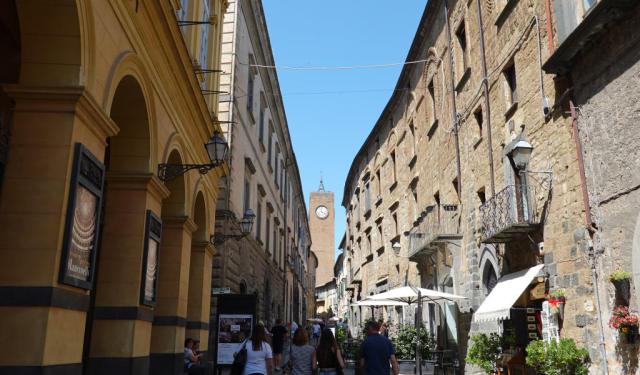
San Giovenale Church, Orvieto
San Giovenale Church is believed to have been built on the site of an ancient Etruscan temple dedicated to Jupiter. The church's origins trace back to an early Christian structure, likely from the 6th century, which was also dedicated to San Giovenale and stood alongside another religious building dedicated to San Savino.
The present-day church was constructed in 1004 with the support of local affluent families and was officially documented as a parish church in 1028. The Romanesque style characterizes its initial architectural design, with a tall bell tower positioned beside the austere facade. Remnants of the Romanesque porch and blind arches from that period can still be seen, while an inscription on the lateral door reveals it was constructed in 1497. The upper part of the church was rebuilt in 1825, preserving the original lower section.
Inside, the church boasts an array of 12th and 13th-century paintings, including votive frescoes created by the Orvieto school. These frescoes were recently uncovered after being concealed during the Baroque renovations of 1632. One of the most prominent works is the 15th-century Maestà, known as the Madonna del Soccorso, generously donated by the Ghezzi family in the 16th century. The marble altar, a remarkable example of Byzantine sculpture, bears the date 1170 and is flanked by late 13th-century marble lecterns featuring symbols of the Evangelists.
The baptistry within the church houses a 14th-century fresco depicting the Ascension of Christ. The entrance is adorned with 9th-century carved pavement slabs, and the 15th-century font adds to the church's historical and artistic significance.
The present-day church was constructed in 1004 with the support of local affluent families and was officially documented as a parish church in 1028. The Romanesque style characterizes its initial architectural design, with a tall bell tower positioned beside the austere facade. Remnants of the Romanesque porch and blind arches from that period can still be seen, while an inscription on the lateral door reveals it was constructed in 1497. The upper part of the church was rebuilt in 1825, preserving the original lower section.
Inside, the church boasts an array of 12th and 13th-century paintings, including votive frescoes created by the Orvieto school. These frescoes were recently uncovered after being concealed during the Baroque renovations of 1632. One of the most prominent works is the 15th-century Maestà, known as the Madonna del Soccorso, generously donated by the Ghezzi family in the 16th century. The marble altar, a remarkable example of Byzantine sculpture, bears the date 1170 and is flanked by late 13th-century marble lecterns featuring symbols of the Evangelists.
The baptistry within the church houses a 14th-century fresco depicting the Ascension of Christ. The entrance is adorned with 9th-century carved pavement slabs, and the 15th-century font adds to the church's historical and artistic significance.
Want to visit this sight? Check out these Self-Guided Walking Tours in Orvieto. Alternatively, you can download the mobile app "GPSmyCity: Walks in 1K+ Cities" from Apple App Store or Google Play Store. The app turns your mobile device to a personal tour guide and it works offline, so no data plan is needed when traveling abroad.
San Giovenale Church on Map






Sight Name: San Giovenale Church
Sight Location: Orvieto, Italy (See walking tours in Orvieto)
Sight Type: Religious
Guide(s) Containing This Sight:
Sight Location: Orvieto, Italy (See walking tours in Orvieto)
Sight Type: Religious
Guide(s) Containing This Sight:
Walking Tours in Orvieto, Italy
Create Your Own Walk in Orvieto
Creating your own self-guided walk in Orvieto is easy and fun. Choose the city attractions that you want to see and a walk route map will be created just for you. You can even set your hotel as the start point of the walk.
Orvieto Introduction Walking Tour
Some 100 kilometers north of Rome, in the picturesque region of Umbria, lies the old town of Orvieto overlooking the Paglia valley from atop a volcanic plateau. The name "Orvieto" stems from “urbs vetus” which means “ancient town” in Latin. Indeed, Orvieto is old, with its roots traced to Etruscan times, circa the 9th century BC.
Despite having been a major center of Etruscan... view more
Tour Duration: 2 Hour(s)
Travel Distance: 3.4 Km or 2.1 Miles
Despite having been a major center of Etruscan... view more
Tour Duration: 2 Hour(s)
Travel Distance: 3.4 Km or 2.1 Miles

